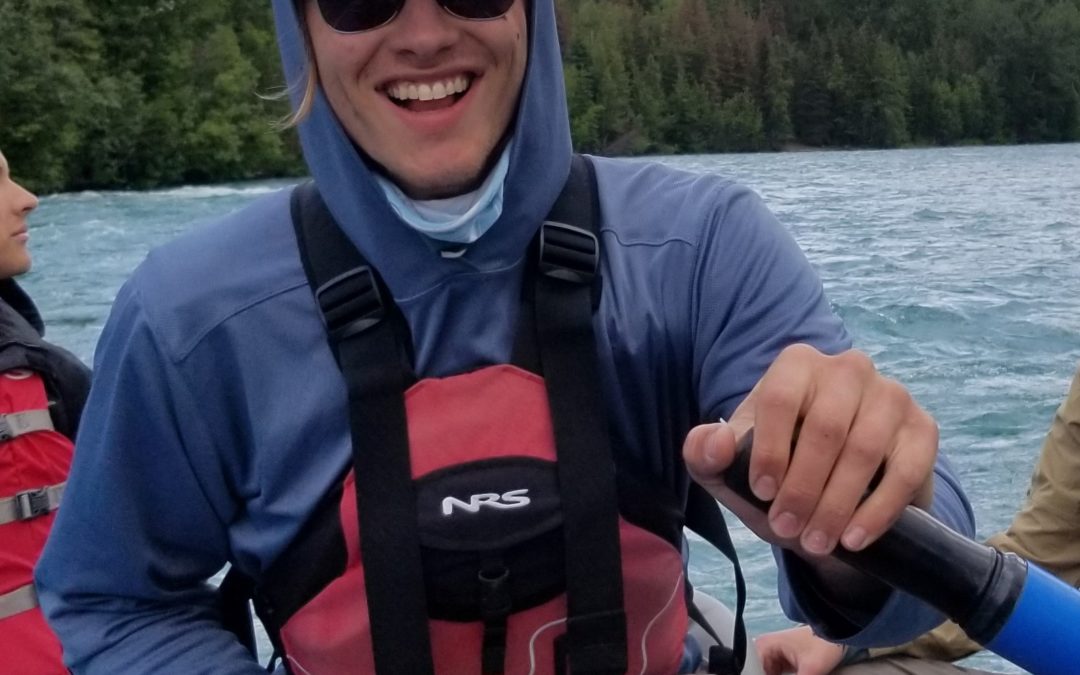My first summer interning with the Kenai Watershed Forum (KWF) was easily the most impactful and enjoyable work experience I have ever had and – like many interns before me – I enjoyed it so much that I returned for a second summer. During my time at KWF I’ve had the opportunity to work alongside a small team of incredibly determined and self-motivated individuals on a wide variety of exciting projects. Some of my favorite things about working for KWF include: getting to collaborate with a slew of different people, conservation agencies and organizations; interacting with locals who have a deep appreciation for the work we do; imparting the things I learned at work to curious kids at our summer camp; and, of course, the opportunity to see and explore the beautiful Kenai Peninsula while at work.
One particular project – controlling an extensive infestation of invasive white sweet clover on the Seward Highway – has stuck with me and encapsulates much of what I have grown to love about working at KWF. It was late in the summer and the rest of the invasive crew and I had been working around the clock to control the spread of invasive plants all over the peninsula. As my time in Alaska waned and the season of growth – where invasive plants seemed to pop up like a whack’a’mole – came to a close, the summer had begun to feel like a job well done. But, as we drove up the Seward Highway to what should have been a routine day of treating small infestations of bird vetch and meadow hawkweed in Portage, we spotted the mother of all white sweet clover infestations.
Broad tendrily bushes, some up to 5-6 feet high, adorned with little white flowers as far as the eye could see. My team and I sat aghast as we continued a mile, then two miles, before seeing a break in the dense infestation. In all my days of pursuing plant species in places they don’t belong, I had never seen such an intense monocrop – a prime example of the detriment to biodiversity that our work aims to prevent.
Doing her best to keep her composure, my fearless supervisor, Invasive Species Program Coordinator, Maura Schumacher, considered our options for managing this infestation that I felt sure had grown far beyond something that we, with our few hands, had any chance to control. We couldn’t mow it because the plants were so mature that they probably already bore viable seeds. We couldn’t treat it with herbicide because our permits didn’t allow us to spray there and by the time we secured a permit, the plants would have already gone to seed. The only option was hand-pulling, but with our little crew of three, it would’ve taken many days, even weeks, to hand pull and bag such a prolific infestation. We had to call for backup!
Overnight, emails were sent and phone calls were made, and by the following day, a large group of people from 6 different agencies and organizations dawned their orange traffic vests and assembled to tackle this beast. Coaxed on by the spectacular mountain vistas around us and unbothered by the constant racket of vehicles whizzing by, we pulled one plant after another for an entire day. By the end of it all, six dumpsters had been filled with bags of white sweet clover and to our knowledge, that section of highway had been rid of every last one of the unwelcome invaders. With tired hands and sore backs we momentarily reveled in our accomplishment and then headed home to our various corners of the peninsula where we could all rest assured that the day had been one heck of a job well done.



